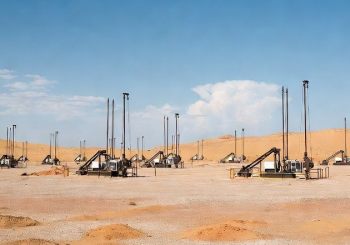Egypt is offering tax exemptions ranging from 33 percent to 55 percent on income generated from green hydrogen projects set to commence production over the next five years, according to Egyptian Minister of Finance Mohamed Maait.
Speaking at the Turkish-Arab Economic Forum in Istanbul on Wednesday, 10 November, Maait told attendees that there is an expansion in the use of green financing tools, with Egypt targeting allocation of 50 percent of government investments to environmentally sustainable projects.
Additionally, the government will roll out an exemption from value-added taxes on production and essential raw materials, such as platinum, palladium, iridium, and more, aimed at lowering financial barriers and improving the economic viability of these environmentally friendly initiatives.
“The current global economic crises have showcased the importance of international and regional partnerships as drivers for economic and social development, opening promising prospects to enhance the role of the private sector in economic activity,” Maait said.
The minister announced a plan to attract the local and foreign private sector to invest in Egypt, expand their participation in economic development, and maximize their contribution to GDP by increasing their investment share to 65 percent in the coming years, thereby creating more job opportunities. This will be possible through government withdrawal from 79 business sectors and reducing investments in 45 others to prioritize the interests of the private sector, as stated by Ahmed Kouchouk, Deputy Finance Minister.
These statements complement the ongoing government effort to position Egypt as a prominent hub for green energy in the region, which started with strides made during COP27 in November 2022 in Sharm El-Sheikh. Egyptian authorities entered into foundational agreements for green hydrogen and ammonia projects valued at USD 83 billion (EGP 2.5 trillion).
These agreements encompass the development of nine green hydrogen and ammonia facilities within the Suez Canal Economic Zone. Upon reaching full operational capacity, these plants are projected to generate a combined output of 7.6 million tons of green ammonia and 2.7 million tons of hydrogen each year.
The demand for hydrogen as a fuel source has tripled since 1975, reaching 95 million tons per year in 2022. However, conventional production techniques utilizing coal and oil still account for over two percent of global carbon dioxide emissions — around 830 million tons in 2018.
In light of the expanding impact of climate change, green hydrogen emerges as an environmentally friendly energy alternative. It emits only water vapor and leaves no harmful residue in the atmosphere.
Green hydrogen, while promising, is not without disadvantages. The industry still has high production costs. Moreover, Hydrogen’s low energy density hinders its efficiency for energy transport.
Transitioning to green hydrogen has the potential to mitigate environmental impact significantly. It could result in the annual avoidance of 830 million tons of carbon dioxide emissions associated with fossil fuel-based hydrogen production.







Comments (0)